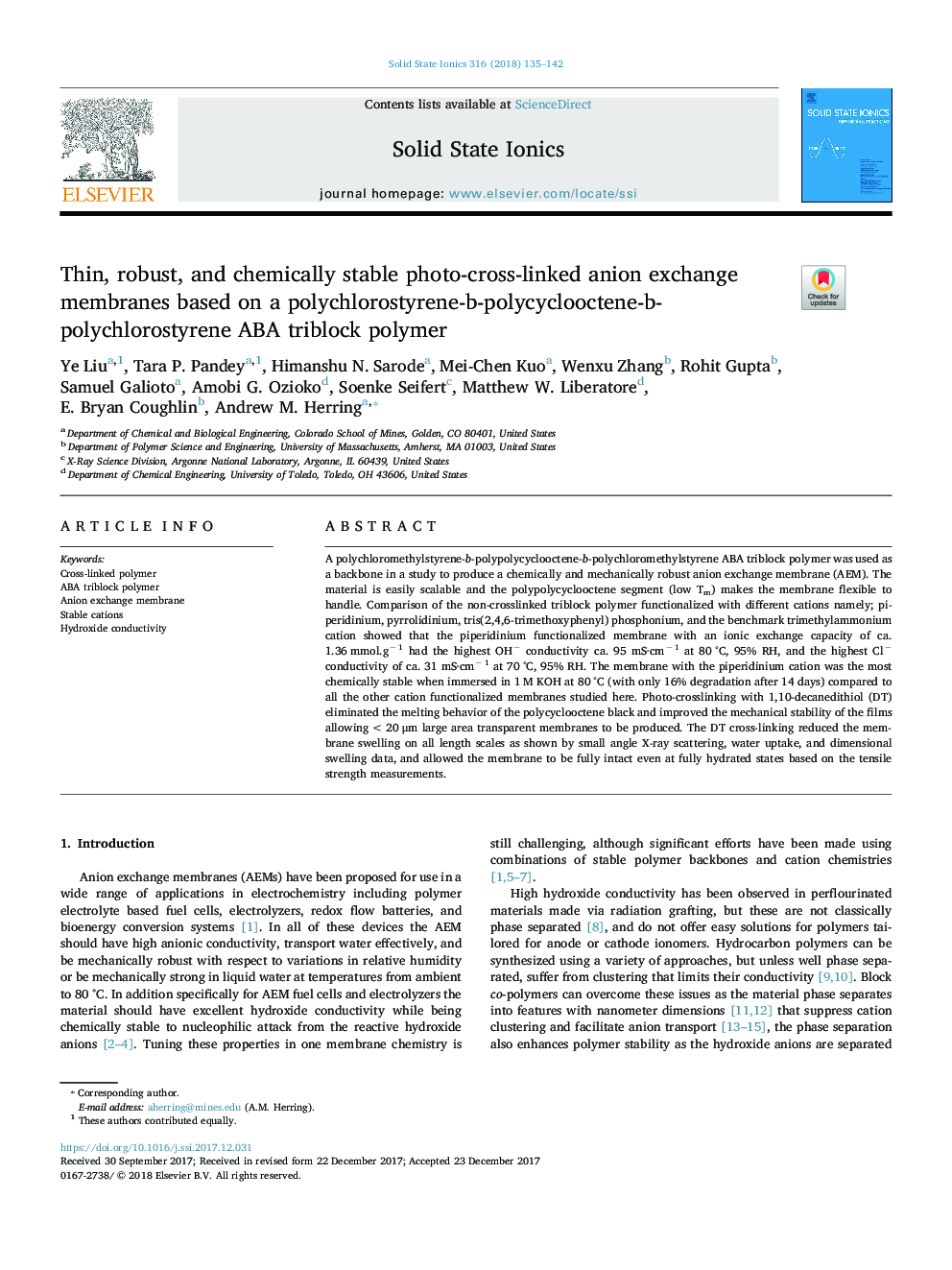| Article ID | Journal | Published Year | Pages | File Type |
|---|---|---|---|---|
| 7744541 | Solid State Ionics | 2018 | 8 Pages |
Abstract
A polychloromethylstyrene-b-polypolycyclooctene-b-polychloromethylstyrene ABA triblock polymer was used as a backbone in a study to produce a chemically and mechanically robust anion exchange membrane (AEM). The material is easily scalable and the polypolycyclooctene segment (low Tm) makes the membrane flexible to handle. Comparison of the non-crosslinked triblock polymer functionalized with different cations namely; piperidinium, pyrrolidinium, tris(2,4,6-trimethoxyphenyl) phosphonium, and the benchmark trimethylammonium cation showed that the piperidinium functionalized membrane with an ionic exchange capacity of ca. 1.36 mmol.gâ 1 had the highest OHâ conductivity ca. 95 mS·cmâ 1 at 80 °C, 95% RH, and the highest Clâ conductivity of ca. 31 mS·cmâ 1 at 70 °C, 95% RH. The membrane with the piperidinium cation was the most chemically stable when immersed in 1 M KOH at 80 °C (with only 16% degradation after 14 days) compared to all the other cation functionalized membranes studied here. Photo-crosslinking with 1,10-decanedithiol (DT) eliminated the melting behavior of the polycyclooctene black and improved the mechanical stability of the films allowing < 20 μm large area transparent membranes to be produced. The DT cross-linking reduced the membrane swelling on all length scales as shown by small angle X-ray scattering, water uptake, and dimensional swelling data, and allowed the membrane to be fully intact even at fully hydrated states based on the tensile strength measurements.
Related Topics
Physical Sciences and Engineering
Chemistry
Electrochemistry
Authors
Ye Liu, Tara P. Pandey, Himanshu N. Sarode, Mei-Chen Kuo, Wenxu Zhang, Rohit Gupta, Samuel Galioto, Amobi G. Ozioko, Soenke Seifert, Matthew W. Liberatore, E. Bryan Coughlin, Andrew M. Herring,
